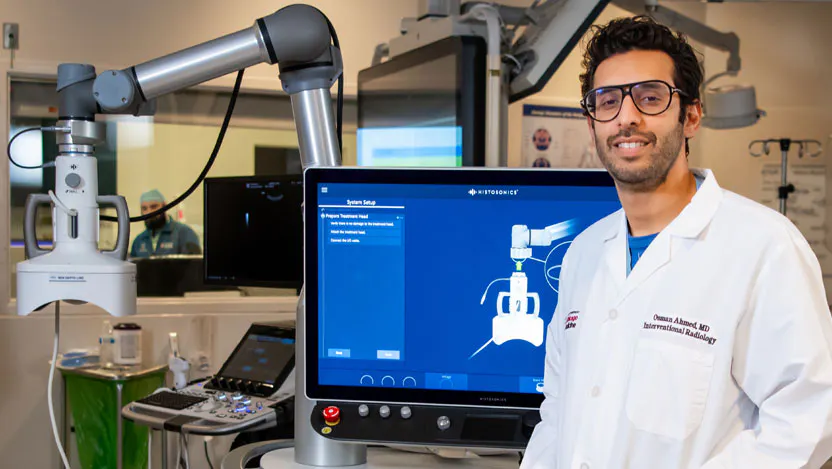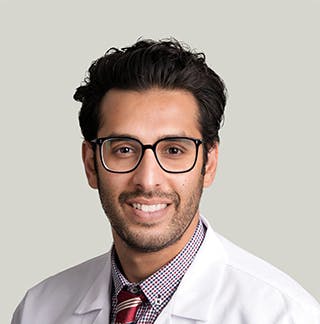UChicago Medicine among the first to offer histotripsy for liver tumors

The University of Chicago Medicine was the first health system in Illinois to treat patients with histotripsy, a new noninvasive technology that uses ultrasound energy to precisely destroy liver tumors.
UChicago Medicine has been involved for years in bringing histotripsy to patients, having treated patients in the U.S. arm of the #HOPE4LIVER clinical trial. Histotripsy technology received FDA approval in October 2023, and UChicago Medicine physicians expect to begin clinical implementation in early 2024.
Safely destroying tumors with targeted sound waves
Histotripsy technology uses high-intensity sound waves to selectively destroy cancer tissue in the liver. Unlike traditional methods such as surgery, radiation or ablation, the procedure does not require any incisions, radiation, needles or invasive procedures.
Before histotripsy treatment, doctors use ultrasound imaging – like what is used to see babies in the womb – to locate the tumor, determine the size of the area that needs to be treated, and target and monitor the treatment area during the procedure. After doctors program the histotripsy robot with the tumor’s coordinates, the machine precisely generates focused sound waves that create a "bubble cloud" inside the targeted area, which disrupts and destroys only the cancerous tissue.
“One of the best things about how this technology works is that it’s protective of things we don’t want to damage,” said Osman Ahmed, MD, associate professor of radiology at UChicago Medicine. “A histotripsy procedure can damage or kill a tumor while leaving important structures like blood vessels and bile ducts intact.”
The treatment is so simple and noninvasive that Ahmed said patients can even wear a t-shirt and jeans rather than a surgical gown.
“The actual procedure can take 5 to 30 minutes depending on the size of the tumor,” he said. “Then we move the robot away, and the patient wakes up. They can even go home the same day, unless they have pain.”
Promising future applications
Using histotripsy technology to treat liver tumors is exciting, but researchers and healthcare professionals are hopeful that it’s just the beginning. #HOPE4KIDNEY clinical trials are already underway to determine the safety and efficacy of treating solid kidney tumors with histotripsy, and laboratory researchers are working on pancreatic cancer applications.
“At the moment, histotripsy is only approved for tumors in the liver, but in the long run it’s really a platform technology,” Ahmed said. “If we can see a tumor with ultrasound, we could theoretically someday treat it with histotripsy.”
Ahmed also said early results from ongoing research suggest that histotripsy procedures release tumor antigens that rev up the human immune system to attack any remaining cancer cells in the body. Scientists hypothesize that this effect could create a synergistic effect with immunotherapy or chemotherapy, creating opportunities for highly effective combination treatments – a possibility that future research will investigate.
“At UChicago Medicine, we’re excited to be early adopters of this technology so we can be the ones to help answer those questions,” Ahmed said. “Our experts already have experience with this innovative treatment, and that knowledge gives us a head start on treating patients well and remaining on the leading edge of histotripsy research.”

Osman Ahmed, MD
Osman Ahmed, MD, is an expert vascular and interventional radiologist who diagnoses and treats a wide range of conditions. Using image-guided technology and small, sophisticated instruments, Dr. Ahmed performs minimally invasive procedures for acute and chronic deep vein thrombosis, benign prostatic hyperplasia, peripheral vascular disease and more.
Learn more about Dr. Ahmed